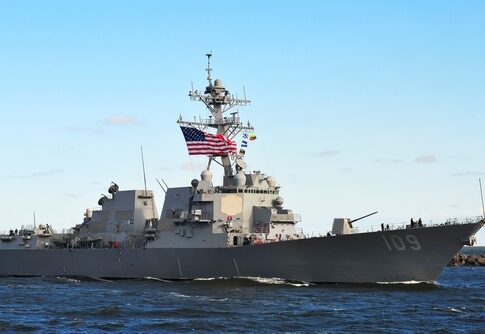Russia and China have commenced one of their most significant joint military exercises in decades, dubbed “Ocean-2024,” marking a major display of naval power. These drills, which began on September 10, 2024, encompass both naval and air forces, spanning from the Pacific and Arctic Oceans to the Mediterranean, Caspian, and Baltic Seas. The exercises are set to run until September 16 and involve more than 400 warships, submarines, 120 aircraft, and over 90,000 troops, according to Russia’s Ministry of Defense.
President Vladimir Putin has called these drills the largest of their kind since the fall of the Soviet Union, emphasizing the deepening military cooperation between Moscow and Beijing. The exercises aim to demonstrate Russia’s ability to project power across multiple regions, while simultaneously waging a war in Ukraine. China, on the other hand, sees these drills as a chance to reinforce its strategic alliance with Russia and challenge U.S. influence in both Europe and the Indo-Pacific.
Russia, China Hold "Largest Naval Drill In 30 Years" With "400 Warships, 125 Planes & 90,000 Troops"
On September 10, Russia and China launched extensive joint naval drills in the Sea of Japan, marking the largest exercise in 30 years. President Putin emphasized the drills'… pic.twitter.com/3JCcqedFVd
— Point Blank News (@_pblanknews) September 12, 2024
Strategically, the drills appear to serve dual purposes. For Russia, they represent an opportunity to test their naval capabilities and show resilience despite the strain of ongoing conflicts. For China, the exercises help enhance its military readiness and expand its operational experience in collaboration with Russian forces, particularly in complex environments like the Sea of Japan and the wider Pacific.
The timing of these drills is crucial, as the U.S. has increased its military presence in both Europe and the Indo-Pacific, citing the growing threats from Russia and China. Russia's Defense Minister, Andrei Belousov, described the exercises as preparations to repel large-scale aggression, including the defense of naval bases and the execution of amphibious operations.
China and Russia prepare for Pacific Rim navy drill after US, Japan, and South Korea exercises
China and Russia are preparing for a joint Pacific Rim naval patrol shortly after the completion of a trilateral drill by the US, Japan, and South Korea in the same area.
The Ministry… pic.twitter.com/7Zkr9ink4x
— Spotlight on China (@spotlightoncn) July 9, 2024
Tensions with neighboring Japan have also risen due to the proximity of the drills to the Sea of Japan, where both Russian and Chinese fleets have been observed. Japan has responded by increasing surveillance and intelligence gathering, as the presence of Chinese ships in this region poses a direct challenge to its national security.
Military analysts note that the collaboration between Russia and China could be seen as a counter to the U.S.-led coalition's growing defense coordination with its allies in Asia, particularly Japan and South Korea. Stephen Nagy, a regional security expert, suggests that these exercises aim to push back against the U.S. and NATO, forcing the West to divert more resources to the Pacific.
Though these drills are primarily a show of strength, they also serve practical military purposes. China’s navy is gaining valuable experience, particularly from Russia’s recent combat exposure in Ukraine, where Russian forces have faced sophisticated drone and missile attacks. By participating in the joint maneuvers, Chinese forces can adapt these experiences to potential conflicts in the South China Sea or Taiwan Strait.
In a broader geopolitical context, these exercises are a stark reminder of the growing alignment between Russia and China, both of which have increasingly positioned themselves in opposition to the Western-led global order. As the U.S. and its allies continue to focus on containing Russia's aggression in Europe and China’s assertiveness in Asia, the Ocean-2024 exercises signal a strengthening alliance that challenges the current balance of power across multiple regions.

